
View of the Lalbagh Fort area. (876k)
Architecture is interesting in Bangladesh. On this page are some pictures of architecture that is not directly religious.
All pictures are © Dr. Günther Eichhorn, unless otherwise noted.
From the Lalbagh Fort entry in Wikipedia:
Lalbagh Fort (also Fort Aurangabad) is an incomplete 17th century Mughal fort complex that stands before the Buriganga River in the southwestern part of Dhaka. The construction was started in 1678 by Mughal Subahdar Muhammad Azam Shah who was son of Emperor Aurangzeb and later emperor himself. His successor, Shaista Khan, did not continue the work, though he stayed in Dhaka up to 1688. The three main parts are the Diwan-i-Aam, the tomb of Bibi Pari, and the Lalbagh mosque.
The Diwan-i-Aam is the two storied residence of the Mughal governor of Bengal located on the east side of the complex.
The tomb of Bibi Pari, the daughter of Shaista Khan, is in the middle of the complex. There is a central square room. It contains the remains of Bibi Pari covered by a false octagonal dome and wrapped by brass plate. The entire inner wall is covered with white marble. Eight rooms surround the central one. There is another small grave in the southeastern corner room.
The Lalbagh mosque has three domes, and is relatively small for a large site, with a water tank for ablutions in front.
The fort was never completed, and unoccupied for a long period of time. Much of the complex was built over and now sits across from modern buildings.



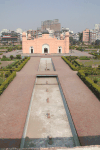



From the Jatiya Sangsad Bhaban entry in Wikipedia:
Jatiya Sangsad Bhaban or National Parliament House is the house of the Parliament of Bangladesh, located at Sher-e-Bangla Nagar in the Bangladeshi capital of Dhaka. Designed by architect Louis Kahn, the complex is the largest legislative complex in the world, comprising 80 ha (200 acres).




From the Khan Jahan Ali entry in Wikipedia:
Khan Jahan Ali died 25 October 25, 1459, also known as Ulugh Khan and Khan-i-Azam, was an Muslim Sufi Saint and local ruler in Bagerhat (now in Bangladesh). The official title Khan-i-Azam signifies that he was an officer of the Bengal Sultan Nasiruddin Mahmud Shah I (1437– 1459). The word Ulugh before his name speaks of his Uzbek origin. It is believed that he built the great Shait Gumbuj Mosque (Sixty Dome Mosque).
His tomb is part of the Historic Mosque City of Bagerhat UNESCO World Heritage Site.



From the Mughal Tahakhana entry in Wikipedia:
Mughal Tahkhana or Shah Shuja Tahkhana is a three storied building. The name means cold building or palace. Its structure is designed to keep the interior cool in the summer and warm in the winter. Sultan of Bengal, Shah Shuja founded this palace as a "Temperature Control Unit" in honor of his Murshed Shah Syed Niyamatullah, mainly for comfort in winter. Son of Mughal Emperor Shah Jahan, Shah Shuja founded this palace between 1619 and 1658
From the Shah Niamatullah Mosque entry in Banglapedia:
Shah Niamatullah Mosque is one of the three extant monuments of the Tahkhana complex, which is supposed to have been built by Shah Shuja (1639-1660) in honor of the saint Shah Niamatullah Wali who lies buried nearby in a tomb. The complex, built on the western bank of a large pond, is now approached through a metaled road which branches-off from the Chhota Sona-Kotwali Road and is about 0.4 km (0.2 miles) away to the northwest of the Choto Shona Mosque.










From the Puthia Rajbari entry in Wikipedia:
Puthia Rajbari is a palace in Puthia Upazila, in Bangladesh, built in 1895 for Rani Hemanta Kumari, it is an example of Indo-Saracenic Revival architecture. The palace is located in the Puthia Temple Complex.

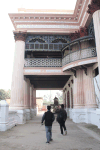


From the Natore Rajbari entry in Wikipedia:
Natore Rajbari (also known as Pagla Raja's Palace, Natore Palace) was a prominent royal palace in Natore, Bangladesh. It was the residence and seat of the Rajshahi Raj family of Zamindars. The famous queen Rani Bhabani lived here and after the death of her husband, expanded both the estate and the palace. It was first built in 1706-1710. Many of the original buildings were destroyed by the earthquake of 1897 and subsequently rebuilt or replaced.


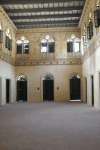



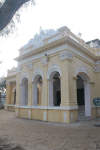
From the Tajhat Palace entry in Wikipedia:
Tajhat Palace is an historic palace of Bangladesh, located in Tajhat, Rangpur. This palace now holds the Rangpur museum. Tajhat Palace is situated 3 km (1.9 miles). south-east of the city of Rangpur, on the outskirts of town. The palace was built by Maharaja Kumar Gopal Lal Roy in the beginning of the 20th century.





From the Sonargaon entry in Wikipedia:
Sonargaon (meaning Village of Gold) was a historic administrative, commercial and maritime center in Bengal. Situated in the center of East Bengal, it was the seat of the medieval Muslim rulers and governors of eastern Bengal. Sonargaon was described by numerous historic travellers, including Ibn Battuta, Ma Huan, Niccolò de' Conti and Ralph Fitch, as a thriving center of trade and commerce.
It was an administrative center of Fakhruddin Mubarak Shah's sultanate, the Bengal Sultanate and the Kingdom of Bhati
The name Sonargaon came as the Bangla version of the ancient name Suvarnagrama. Buddhist ruler Danujamadhava Dasharathadeva shifted his capital to Suvarnagrama from Bikrampur sometime in the middle of the 13th century. In the early 14th century, Buddhist rule in this kingdom ended when Shamsuddin Firoz Shah (reigned 1301–1322) of Lakhnauti conquered it.
Muslim settlers first arrive in Sonargaon region in around 1281. Sharfuddin Abu Tawwamah, a medieval Sufi saint and Islamic philosopher came and settled here sometime between 1282 and 1287.
When Taj Khan Karrani was the independent Afghan ruler of Bengal, Isa Khan obtained an estate in Sonargaon and Maheswardi Pargana in 1564 as a vassal of the Karrani rulers. Isa Khan gradually increased his strength and in 1571 he was designated as the ruler of the whole Bhati region. In 1575 he helped Daud Khan Karrani fight the Mughal flotilla in the vicinity of Sonargaon.


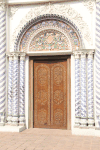
From the Panam City (Panam_Nagor) entry in Wikipedia:
Panam City is situated at Sonargaon, Narayanganj in Bangladesh. It is an ancient historical city in Bangladesh. Among the three cities of Boro Nogor (Big City), Khas Nogor, Panam City, it was most attractive city. There are many historical buildings which were built centuries ago and those are related with the history of Baro-Bhuyan. It covered 20 km (12 miles) area of Sonargaon. Panam City is one of the most visited tourist spots in Bangladesh.
As the capital of the fifteenth-century Bengal ruler Isa Khan, and once an important trading and political center, Sonargaon boasts architecture of the Sultanate, Mughal, and colonial periods. The Sonargaon historic city, located near the present-day capital of Dhaka, includes several Mughal monuments-among them the Sonakanda River Fort, the Panch Pir Mazar Shrine, and Ibrahim's and Abdul Hamid's Mosque. British colonial architecture preserved in Sonargaon includes the Ananda Mohan Piddar House, and other street-front houses. For travelers making their way along the 2,500 km (1,550 miles) Grand Trunk Road from Peshawar in the Hindu Kush, Sonargaon marked the end of the line.
The city was linked with the main city area by three brick bridges - Panam Bridge, Dalalpur Bridge and PanamNagar Bridge – during the Mughal period. The bridges are still in use.

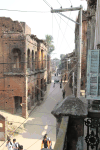





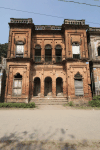
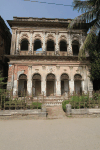




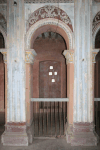
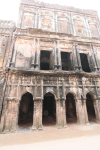
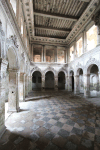
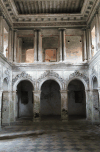


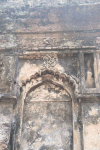

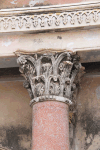

This page contains 66 pictures

Main page for বাংলাদেশ (Bangladesh)
Page last updated on Fri Dec 2 12:49:22 2022 (Mountain Standard Time)
Page last updated on Tue Apr 23 08:12:06 2024 (Mountain Standard Time)
Miscellaneous Architecture in Bangladesh on soaring.geichhorn.com